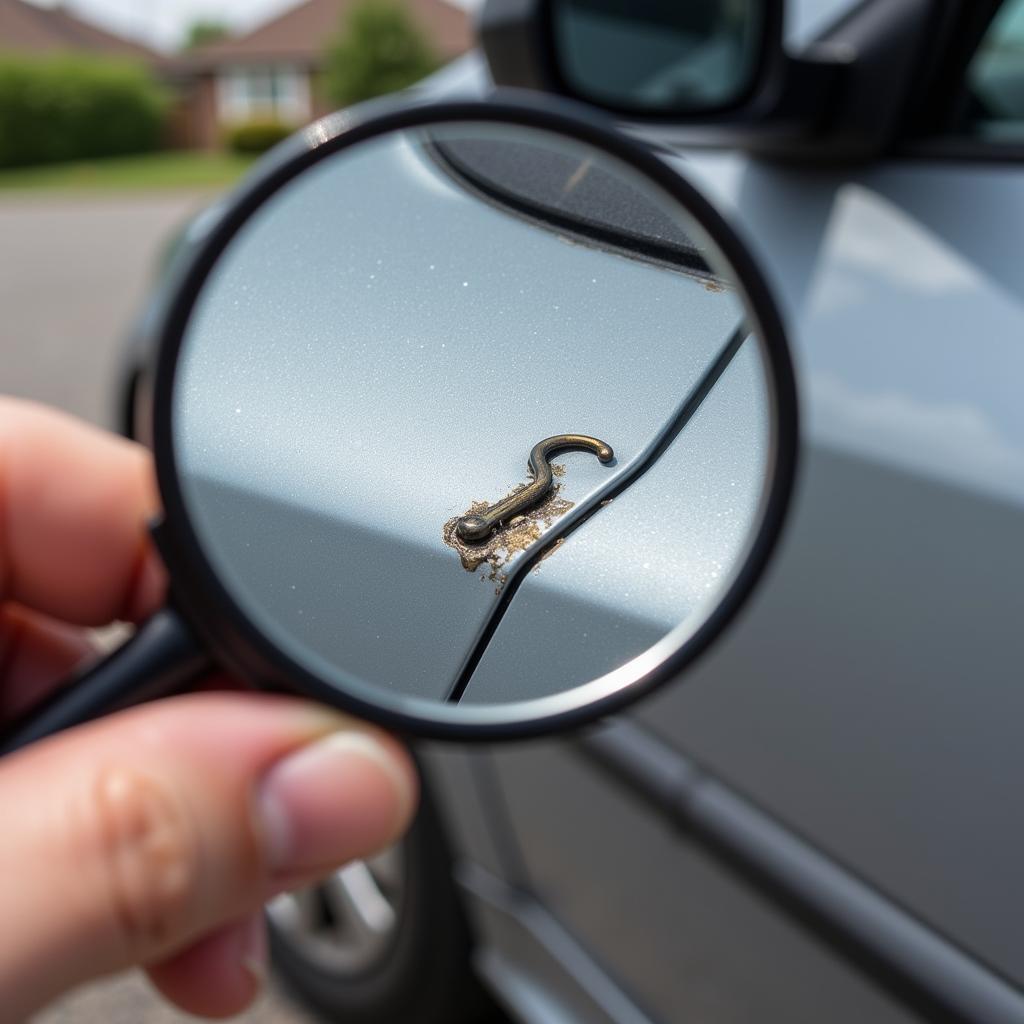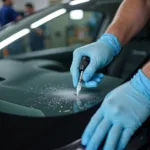Fixing paint damage on your car’s hook can seem daunting, but with the right approach and a little patience, you can achieve professional-looking results. Whether it’s a small chip, a deep scratch, or rust forming around the hook area, understanding the repair process is essential for protecting your car’s appearance and value. This guide will walk you through the steps of repairing paint damage to your car’s hook, from assessment to the final touches.
Assessing the Damage
Before diving into the repair process, carefully examine the extent of the damage. Is it a surface scratch, a chip that’s reached the primer, or a deeper gouge exposing the metal underneath? The severity of the damage dictates the repair approach. Minor scratches might only require touch-up paint, while deeper damage may necessitate sanding, priming, and even rust removal. Accurately assessing the damage will ensure you use the appropriate materials and techniques.
Gathering Your Supplies
Having the right tools and materials on hand will streamline the repair process. Depending on the damage, you’ll need items like sandpaper (various grits), primer, touch-up paint (matched to your car’s color code), clear coat, masking tape, rubbing compound, polishing compound, and microfiber cloths. A good quality applicator, like a fine-tipped brush or a touch-up pen, is also crucial for precise application.
 Assessing Paint Damage on Car Hook
Assessing Paint Damage on Car Hook
Preparing the Area
Clean the damaged area thoroughly with soap and water, then dry it completely. Use masking tape to protect the surrounding paint from overspray or accidental sanding. If there’s any rust present, remove it with a wire brush or rust remover product. This step is critical for preventing future corrosion and ensuring proper paint adhesion. For deeper scratches or chips, sand the area with progressively finer grits of sandpaper to create a smooth surface for the primer and paint.
Priming and Painting
If the damage has reached the primer or metal, apply a thin, even coat of automotive primer to the affected area. Allow the primer to dry completely according to the manufacturer’s instructions. Once dry, lightly sand the primed area with fine-grit sandpaper to create a smooth surface. Next, apply thin coats of touch-up paint, allowing each coat to dry before applying the next. Avoid applying thick coats, as this can lead to runs and drips. Patience is key during this stage to achieve a seamless finish.
Finishing Touches
After the paint has dried completely, apply a clear coat to protect the repair and match the sheen of the surrounding paintwork. Once the clear coat has dried, use rubbing compound and a microfiber cloth to remove any imperfections and blend the repair seamlessly. Follow up with polishing compound to restore the shine and achieve a professional-looking result.
Common Questions About Car Hook Paint Repair
What if I don’t know my car’s paint code?
Your car’s paint code can usually be found on a sticker inside the driver’s side doorjamb, glove compartment, or under the hood. You can also check your owner’s manual or contact your car’s manufacturer.
Can I use regular spray paint for touch-ups?
It’s recommended to use automotive touch-up paint specifically formulated for your car’s color code. Regular spray paint may not match the color or provide the same durability and protection.
How can I prevent future paint damage to my car’s hook?
Regular cleaning and waxing can help protect the paint. Avoid hanging heavy or abrasive items on the hook.
What if the damage is too extensive for DIY repair?
For significant damage, consult a professional auto body repair shop. They have the expertise and equipment to handle more complex repairs.
Conclusion
Repairing paint damage to your car’s hook is a manageable DIY project that can save you money and preserve your vehicle’s appearance. By following these steps and exercising patience, you can achieve professional-looking results and protect your car from further damage. Remember to assess the damage accurately, gather the necessary supplies, and follow the instructions carefully for each product you use. For more tips and advice on car repair and maintenance, explore our other articles on CarRepairOnline.
Need more help? Contact us via WhatsApp: +1(641)206-8880, or email: [email protected]. Our 24/7 customer support team is ready to assist you.


